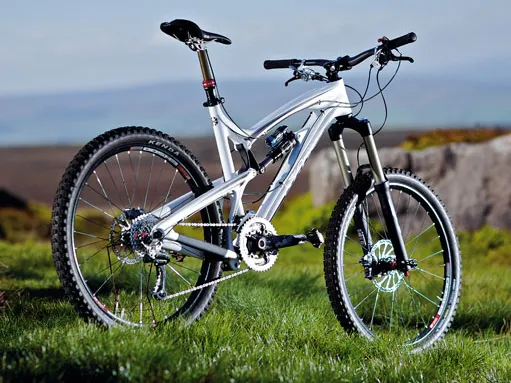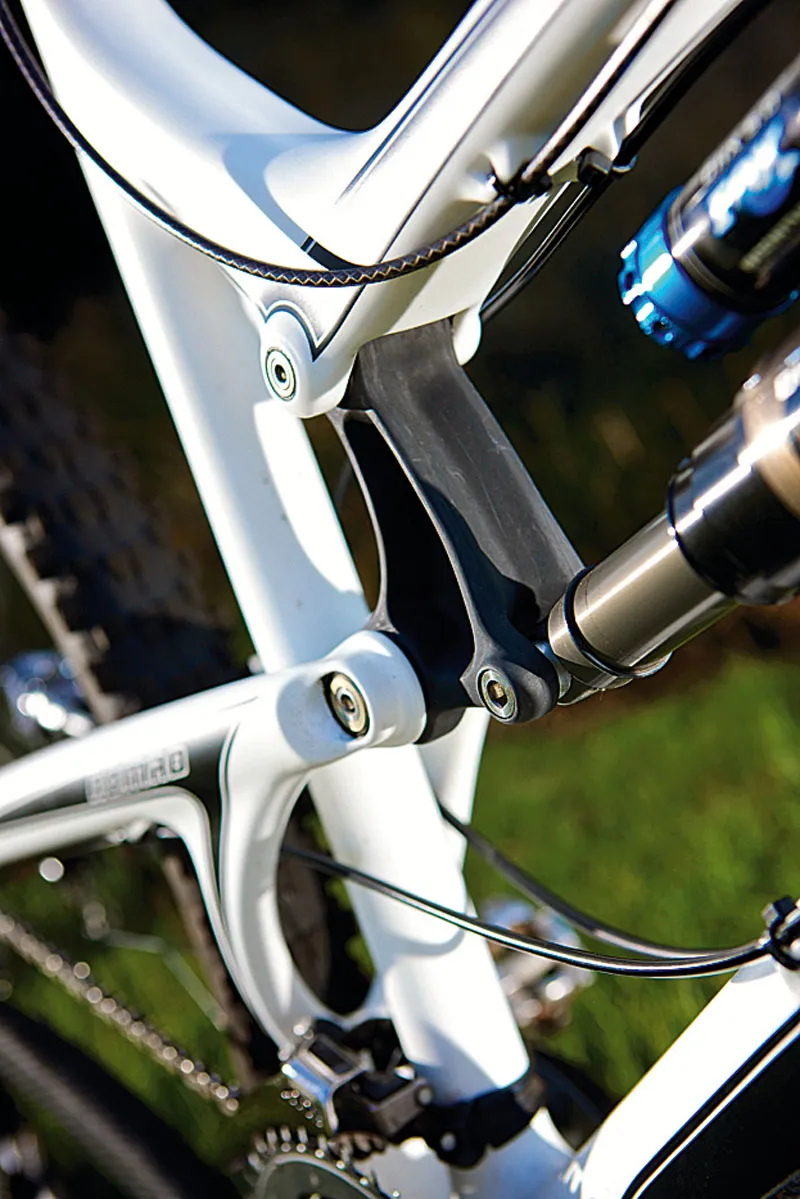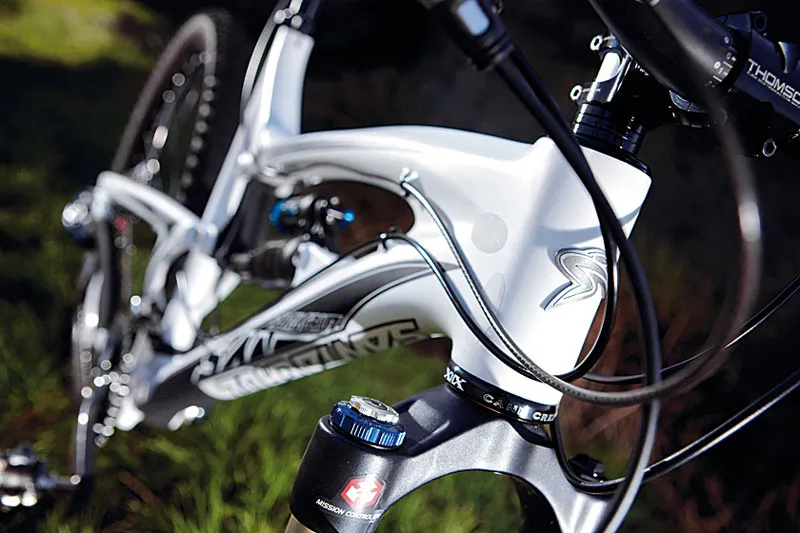The Nomad was one of the first true do-anything all-rounders and it’s still among the best around. Now the continuing Santa Cruz carbon fibre revolution has taken the Nomad’s performance to a whole new level for those who can afford it.
We spent nearly all our time on the Nomad Carbon mashing the pedals and muscling the bars as hard as possible through the singletrack. Not only did bracing ourselves against the frame's massive stiffness feel great, but we found that keeping pole position was vital.
Otherwise, you’ll be on the brakes trying to avoid riders ricocheting around on lesser bikes, rather than having the space to rip through turns in a roar of scrabbling rubber and blast through boulder fields like they’re a gravel drive.
Ride & handling: Really shines on big hills and big rocks
The Nomad Carbon is stiff. Immediately, obviously, dramatically, ‘noticeable as soon as you put your hands on the bar’ stiff. That last comment sounds dumb, but it’s not as daft as it seems. Ride enough bikes and you can often pick up the inherent resonance and rigidity of a frame just by the way it feels with one hand on the bar. And with the Nomad Carbon, it feels like you’ve just shaken hands with a block of granite.
The chassis is so stiff, in fact, that we had to spend a lot more time than usual tuning the shocks to feel smooth, rather than relying on frame flex. While it feels almost intimidating when you’re just cruising along flowing trails, that rigidity comes into its own when you kick in the power or hit a gradient and raise your game.
Steering accuracy is outstanding to the point where you have to deliberately steer slightly wide of apexes and start corners fractionally late until your reactions recalibrate. Counter-intuitively, the sharpness and trail vibration decrease the faster and harder you go, because the carbon layup sucks out the sting that alloy bikes tend to amplify. The harder you push the bike, the more it justifies its increased cost too.
Thanks to the chassis stiffness, the big RockShox Lyrik fork supplied with our test frame is totally integrated into the ride, feeling more like RockShox’s lighter-weight and shorter-travel Revelation than the proper big forks that normally dominate heavy-set trail bikes. There’s no sense that the tail, or rather nose, is wagging the dog either, and the carbon hindquarters are equally rigid and responsive.
Carved lines are clinically sharp and the power snaps down dramatically as the Virtual Pivot Point (VPP) linkages dig in under torque. The VPP action is accentuated too, which is either a good or bad thing, depending on taste. It’s great if you like suspension that sucks up square edges spectacularly, stiffens when you stamp on the pedals and don’t mind some kickback if you keep the power on across rocky or rutted sections.
It’s not so hot if you want a more neutral ride that rolls along passively whatever you’re doing. Either way, there’s no arguing that the increased rear end stiffness and the pound less of frame weight compared to the alloy Nomad make a significant difference to acceleration, ease of altitude gain and overall agility.
It’s still a big hunk of a bike once it’s fully built, but there’s no sense the extra suspension is losing you accuracy or ground speed. In short, you can rip the Nomad Carbon across country like a much lighter bike. Attacking climbs and contesting summit sprints are its default setting, unlike the attitude of some bigger bikes.
Frame: Proven geometry in a lighter, stiffer and sleeker package
The carbonisation of the Nomad comes after Santa Cruz’s work on the Blur XC, Blur LT and Tallboy frames. As such, it uses the same hand-formed single-piece front end and two-piece seam-wrapped rear swingarm construction. It’s certainly not the cheapest way to make bikes, but it does mean the builders can get right inside the mould for maximum carbon piece lay-up accuracy and compaction.
The latter is handy because more pressure means less weak bonding resin is used, and the overall result of the process is a stronger, more consistent build quality. The deep flowing lines include a massive 6.5in-deep front end section behind the untapered, 180mm-travel-fork-compatible 1.5in head tube, and a top tube that’s 3in deep at the rocker-link pivot.
Curved webs at the front of the rear subframe and another web ahead of the dropouts reinforce potential weak points. Meanwhile, the top swing link is a deep full-carbon knuckle. The result is a frame that’s just over a pound lighter than the alloy version, weighing 6.1lb (2.8kg) for a medium, but 15-30 percent stiffer, depending how and where you measure it.
If you’re afraid of going hard on a carbon bike, fear not here – the thicker walled down tube face and chainstays include aramid (Kevlar) fibres for increased impact resistance. Not only that, but the armoured sections on the chainstay and down tube belly are replaceable, while an alloy lower link grants better rock resistance and confined space strength as well.
As head designer Joe Graney says: “This frame is very, very strong. It was the Nomad Carbon that convinced us we can make a carbon V10 frame that would laugh at the World Cup courses.” For full versatility, the carbon frame gets serviceable collet bearings, ultra light titanium fixtures, big tyre clearance, ISCG chainguide tabs and slotted guides for a remote control droppable seatpost.
The potential of this frame does place a massive amount of pressure on the componentry, though. Accurate suspension tuning is vital too – unless you really know your onions, get someone who does to sort out the various adjustments of the Fox DHX shock.





